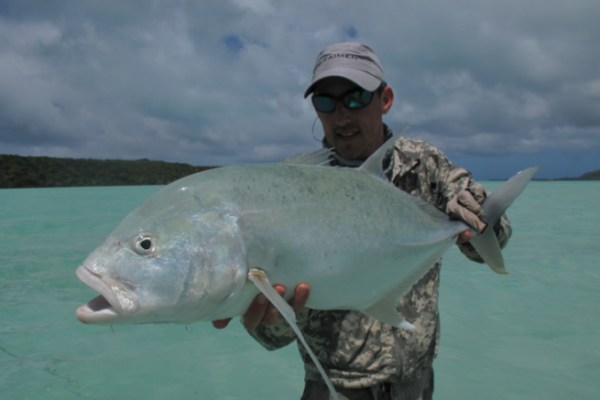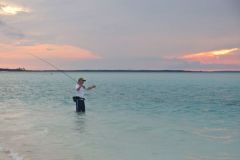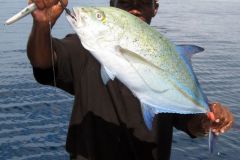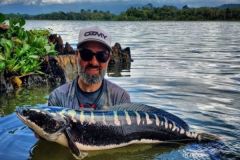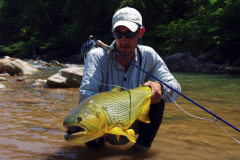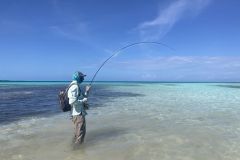The kingfish family
There are a huge number of jacks that can be caught with a fly rod, either opportunistically or for a specific destination.
Some destinations are very accessible in the search for these fish, which are highly coveted depending on the species, such as the ignobilis trevally known as the GT or Giant Trevally, which is one of the largest trevally and is caught very well on a fly on the flats or at the edge of the reef, mainly in the Indian Ocean.
Other jacks are sometimes found on the flats, but mostly on the edges and in open water. We call them "jacks". They include blue or blue runner jacks, hippo jacks, speckled jacks, yellow jacks... It would be difficult to list them all, so many exist depending on the destination.
They are oval-shaped fish with long, fine fins that swim very fast to feed mainly on forage fish, but also on crustaceans and crabs. They have powerful jaws to crunch their prey, but no sharp teeth requiring a steel leader. Depending on the species, a strong tip is required, between 40° and 80° or even 100° (GT).
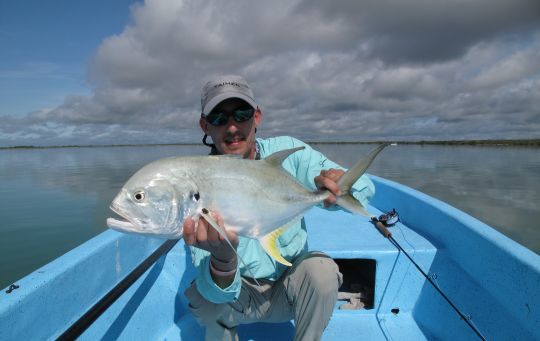
Jack fishing
Once again, their fishing will be slightly different depending on the species.
Let's take the case of the jacks we find on the flats when looking for bonefish and permits.
Such is the case with Jack crevale ( caranx hippos ), blue trevally (coubali trevally), yellow-spotted trevally ( c. fulvoguttatus ), golden carangue ( gnathanodon speciosus ), ...
These fish often come onto the flats or along the edge of the flats to feed on anything that passes by. Although they chase forage fish most of the time, they're not averse to munching on shrimp or even a well-presented crab. Fish them like bonefish or permit, casting ahead of the fish to set your fly on the bottom and intercept their trajectory. The bite is often more violent than for bonefish or permit.
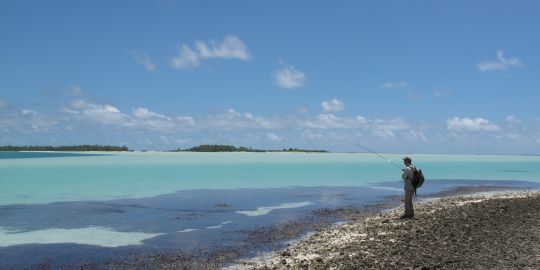
Smaller species (500g to 4/5 kg or more) can be caught with a bonefish leader or permit in 20 lbs without too much risk of being cut. Larger specimens will require a stronger tip to resist the abrasion of their small rasping teeth. We sometimes get cut on fine points.
In this case, we often use shrimp imitations, which these jacks will take without a second thought. I've caught many species on trips to different destinations and they're always very combative and fun to catch. The backing flies in the rings and the fights are sporting!
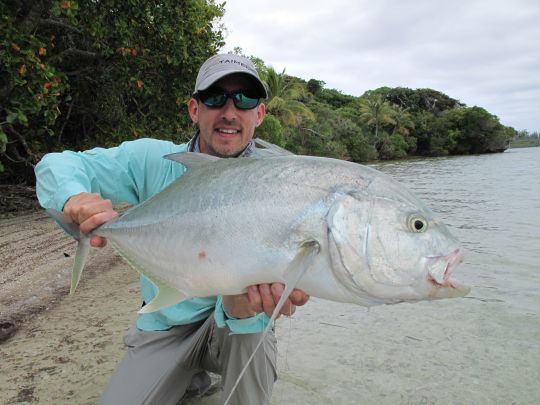
Large trevally will look specifically for a stronger leader and a 40° to 80° tip. This is the case for big jack crevalle, blue trevally and especially GT or Giant Trevally.
These fish are very violent and require more powerful equipment than bonefish, for example. We often use a 10-power rod (or even 12-power for the GT) with a good drag and streamers imitating various fish, which is what they are most often looking for.
These are interception or chase fisheries that require speed of execution to cast fast and far. The hooking is done with silk, and beware of the lightning start and the risk of breakage!
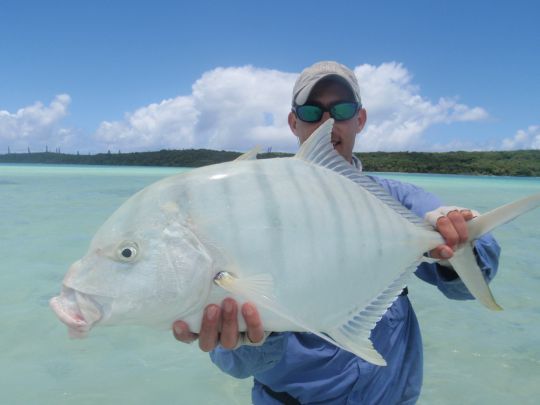
The best destinations for searching for trevallies
Most jacks are found in the Caribbean, in Cuba, Mexico, Belize, Guadeloupe and elsewhere. They include jack crevalle, blue runner and other species.
Blue and GT trevally are only caught in the Indian Ocean, notably in the Seychelles, the Maldives and Christmas Island.
In New Caledonia, it is possible to catch Golden trevally ( gnathanodon speciosus ) and Papuan trevallies ( caranx papuensis ) on the flats. They generally weigh from 2 to 7/8 kg or more. These fish are very pleasant to catch when you're looking for the very big Caledonian bonefish. But big GT are also present, especially near the coral reef.
